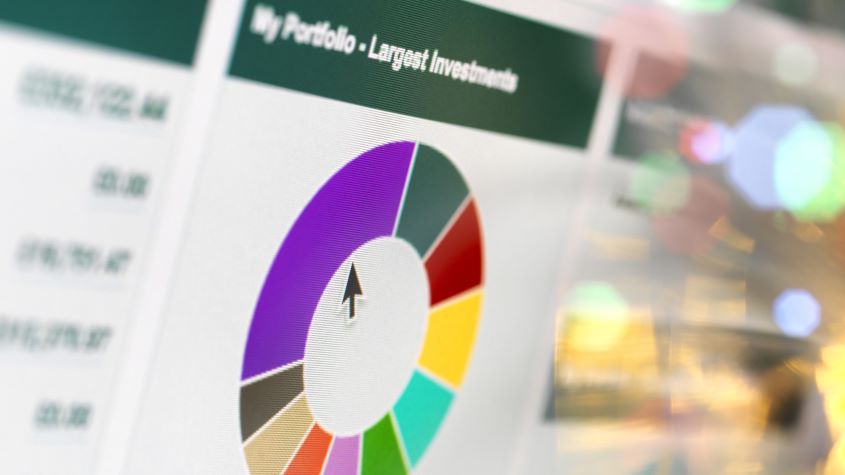Does your portfolio need a review: here's how to give yours a spring clean
The start of the new financial year is a good time to look into your investments


The new tax year is fast approaching, and with it a series of changes to tax and allowances will impact your finances, meaning now could be the perfect time to give your portfolio a review.
What’s more, with the UK economy facing multiple challenges such as high inflation, rising interest rates and a property market slump, it’s never been more important to make sure your money’s working as hard as possible.
Here are some of the things to consider when reviewing your portfolio.
MoneyWeek
Subscribe to MoneyWeek today and get your first six magazine issues absolutely FREE

Sign up to Money Morning
Don't miss the latest investment and personal finances news, market analysis, plus money-saving tips with our free twice-daily newsletter
Don't miss the latest investment and personal finances news, market analysis, plus money-saving tips with our free twice-daily newsletter
1. Know your goals
Before you do anything it’s a good idea to sit down and think about what you want to get from your investments.
Are you saving for retirement? To buy a home? Whatever your goals are, long or short-term, it’s a good idea to be clear.
“Investing without setting a goal is like going for a drive without a destination in mind,” says Laura Suter, head of personal finance at AJ Bell. When you have an objective it’s easier to figure out how much risk you can take and which assets might be suitable.”
2. Make sure your investments are still right for you
Once you know what your goals are, it’s time to reevaluate your portfolio. If your goals have changed, do your investments still make sense?
If you think any of them have become too risky, it might be wise to consider investing elsewhere.
Equally, if you’re in a position to take more risk you could reassess to make sure your portfolio fits with your investment goals, especially if these have changed since you started investing.
3. Rebalance your portfolio
Now that you’ve covered the basics, and have decided whether your investments still align with your goals, it’s time to rebalance your portfolio.
“Rebalancing your investments every year or so is also important to make sure you don’t end up with an unbalanced portfolio,” says Suter. “If some investments have done particularly well in the past year and others have fallen, your portfolio will be skewed towards those outperformers.”
Think about how you want your investments split and see how your portfolio has deviated from that over the last year. If it has skewed more towards one of them, you might want to sell a portion to return to your desired balance.
“While it can feel counterintuitive to sell the stocks that have risen and buy more of the ones that have fallen, that’s the theory you should be sticking to,” says Suter.
But before overhauling your entire portfolio, it’s important to consider what the market has experienced over the past year.
“Much of the UK market, other than a handful of the largest companies, and oil and gas firms, lost significant sums last year,” says Emma Wall, head of investment and analysis research at Hargreaves Lansdown.
“The US was all over the shop, and the Chinese index beaten up too. Much of the bond market also experienced a rout in 2022. So the first question is – is now the right time to sell? And why?
“It can feel uncomfortable when your investments have experienced a period of underperformance, but before you throw them out of your portfolio ask yourself why you invested in them in the first place… If the holding still helps you achieve your long-term investment goal, hold tight.”
4. Check your investment’s performance in the portfolio review
That brings us to our fourth consideration – checking on how your investments have been doing.
If you’re going to sell part of the investments that have outperformed to rebalance your portfolio, you also need to look at the ones that have underperformed – and why. This is the case even if you only invest in funds and not individual stocks.
“While investing in funds is less time intensive than picking stocks, it’s not a totally hands-off approach,” adds Suter. “You need to check that your fund managers aren’t creeping away from their core style and that they are still investing in the types of companies you’d expect…. You bought the manager for their expertise in a particular area, so any move away from that should be a warning signal.
It’s normal for fund managers to experience periods of underperformance, but investors must try to understand why. It could be that their sector or investment style has fallen out of favour due to wider market conditions – but it could also be something more specific, such as style drift.
“Knowing which market conditions they will likely outperform in and when they will lag the market means you’ll be more able to weed out where a fund manager is having a duff period vs their style is just out of favour,” says Suter.
5. Make sure you’re making the most out of your allowances
There are changes to income tax, capital gains tax and dividend allowance coming into effect from April when the new financial year starts. We outline all of these in our article: How much tax will you pay from April 2023?
Ahead of the start of the new tax year, it’s important to make sure you’ve made use of the current, more generous allowances.
This could include reviewing and doing some last-minute shopping for your ISA or transferring your current assets via a Bed and ISA.
“The impending swingeing cuts to the CGT and dividend tax threshold provides the impetus for investors to invest through a tax efficient wrapper if they haven’t already done so,” says Myron Jobson, senior personal finance analyst at interactive investor.
“Shifting investments into an ISA protects future gains and dividends from the clutches of tax,” Jobson adds. “It also means that you will no longer have to declare them on your self-assessment tax return. Bed & ISA is also a valuable tool as a part of a broader portfolio spring clean strategy.”
6. Look at your investment platform fees
Investment platforms charge a percentage or flat fees. Some are more costly than others, and this could be eating into your returns.
Check that the fees you’re paying make sense for the investments you hold.
If you have a larger portfolio, you will be paying a larger percentage fee.
But fees shouldn't be the only thing you consider when looking for an investment platform. Make sure the investment options and the services they offer are right for you.
Get the latest financial news, insights and expert analysis from our award-winning MoneyWeek team, to help you understand what really matters when it comes to your finances.
Nic studied for a BA in journalism at Cardiff University, and has an MA in magazine journalism from City University. She has previously worked for MoneyWeek.
-
 ‘Why I have ditched my Help to Buy ISA for cash savings and the stock market’
‘Why I have ditched my Help to Buy ISA for cash savings and the stock market’Without the 25% bonus, my Help to Buy ISA is effectively redundant, says MoneyWeek writer Sam Walker.
-
 Is your inheritance tax allowance cut if you sell to downsize or sell your home to pay for care?
Is your inheritance tax allowance cut if you sell to downsize or sell your home to pay for care?Downsizing relief is a little-known benefit that could save your loved ones tens of thousands of pounds in inheritance tax after you’ve died.
-
 Halifax: House price slump continues as prices slide for the sixth consecutive month
Halifax: House price slump continues as prices slide for the sixth consecutive monthUK house prices fell again in September as buyers returned, but the slowdown was not as fast as anticipated, latest Halifax data shows. Where are house prices falling the most?
-
 Rents hit a record high - but is the opportunity for buy-to-let investors still strong?
Rents hit a record high - but is the opportunity for buy-to-let investors still strong?UK rent prices have hit a record high with the average hitting over £1,200 a month says Rightmove. Are there still opportunities in buy-to-let?
-
 Pension savers turn to gold investments
Pension savers turn to gold investmentsInvestors are racing to buy gold to protect their pensions from a stock market correction and high inflation, experts say
-
 Where to find the best returns from student accommodation
Where to find the best returns from student accommodationStudent accommodation can be a lucrative investment if you know where to look.
-
 The world’s best bargain stocks
The world’s best bargain stocksSearching for bargain stocks with Alec Cutler of the Orbis Global Balanced Fund, who tells Andrew Van Sickle which sectors are being overlooked.
-
 Revealed: the cheapest cities to own a home in Britain
Revealed: the cheapest cities to own a home in BritainNew research reveals the cheapest cities to own a home, taking account of mortgage payments, utility bills and council tax
-
 UK recession: How to protect your portfolio
UK recession: How to protect your portfolioAs the UK recession is confirmed, we look at ways to protect your wealth.
-
 Buy-to-let returns fall 59% amid higher mortgage rates
Buy-to-let returns fall 59% amid higher mortgage ratesBuy-to-let returns are slumping as the cost of borrowing spirals.
